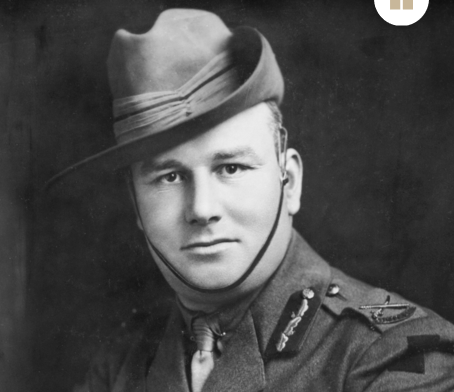Fromelles
As Australian forces joined the main theatre of war on the Western Front in 1916, the British and French armies had for some months been planning a joint offensive in the Somme region of France.
Originally intended as a French operation with British assistance, the plan changed when the Germans attacked the French at Verdun in 1916. With France’s forces engaged there, the British were called on to begin the Somme campaign as quickly as possible, and with minimal assistance from their allies.
The offensive commenced on 1 July 1916, and in a single day almost 58,000 British casualties were recorded, of whom some 19,000 were killed. This remains the most costly day in the history of the British army. The Somme offensive would last almost five months, and consisted of a string of small-scale battles, many of which became infamous.
Australian official war correspondent Charles Bean surveys a devastated area of the Somme, 1916.
Fromelles from the air, c. 1916. The Australian line is closest to the camera, stretching from the bottom right to the centre left. The German line lies above it.
In July 1916, with casualties mounting on the Somme, an attempt was made to occupy German potential reinforcements elsewhere. British Lieutenant General Sir Richard Haking was given permission to attack the Germans at Fromelles. The Australian 5th Division, the most recently arrived and least prepared of the Australian divisions, was called in to work with the British 61st Division, and was the first group of Australians to see heavy action on the Western Front.
On the evening of 19 July the allied troops launched an operation towards a German position known as the Sugar Loaf salient. This position was well defended by barbed wire, concrete bunkers, and machine-gunners, and among its troops was one man who would come to play a major role in the Second World War – Austrian Corporal Adolf Hitler.
Although small sections of the German trenches were captured, the allied troops were eventually forced to withdraw. By 8 am the following morning the 5th Division had suffered 5,533 casualties, around 2,000 of whom were killed in action. Approximately 500 allied troops were taken as prisoners of war, the majority being Australian. The British suffered 1,547 casualties, while the Germans incurred 1,793. Fromelles was considered one of the most disastrous allied failures of the First World War, and remains Australia’s worst military defeat.
CASE STUDY
Harold Edward “Pompey” Elliott
A inspiring and outspoken leader, Elliott was a Boer War veteran with extensive military experience. Even so, he was acutely pained by the enormous losses sustained by his men at Fromelles.
Questions and activities
-
Why do you think the allies suffered such high casualty rates at Fromelles?
-
What is trench warfare? What are the advantages and disadvantages of this type of warfare?
-
The battle of Fromelles has been described as the worst 24 hours in Australia’s history, and is often used to represent the Australian experience on the Western Front. Research one of the following Western Front battles, and compare/contrast your selection to that of Fromelles.
- Pozières
- First battle of Bullecourt
- Third battle of Ypres
- Hamel
-
Which battle do you think was more “costly”? How can the “cost” of a battle be measured?
-
Why do you think Australians remember some battles more than others?


